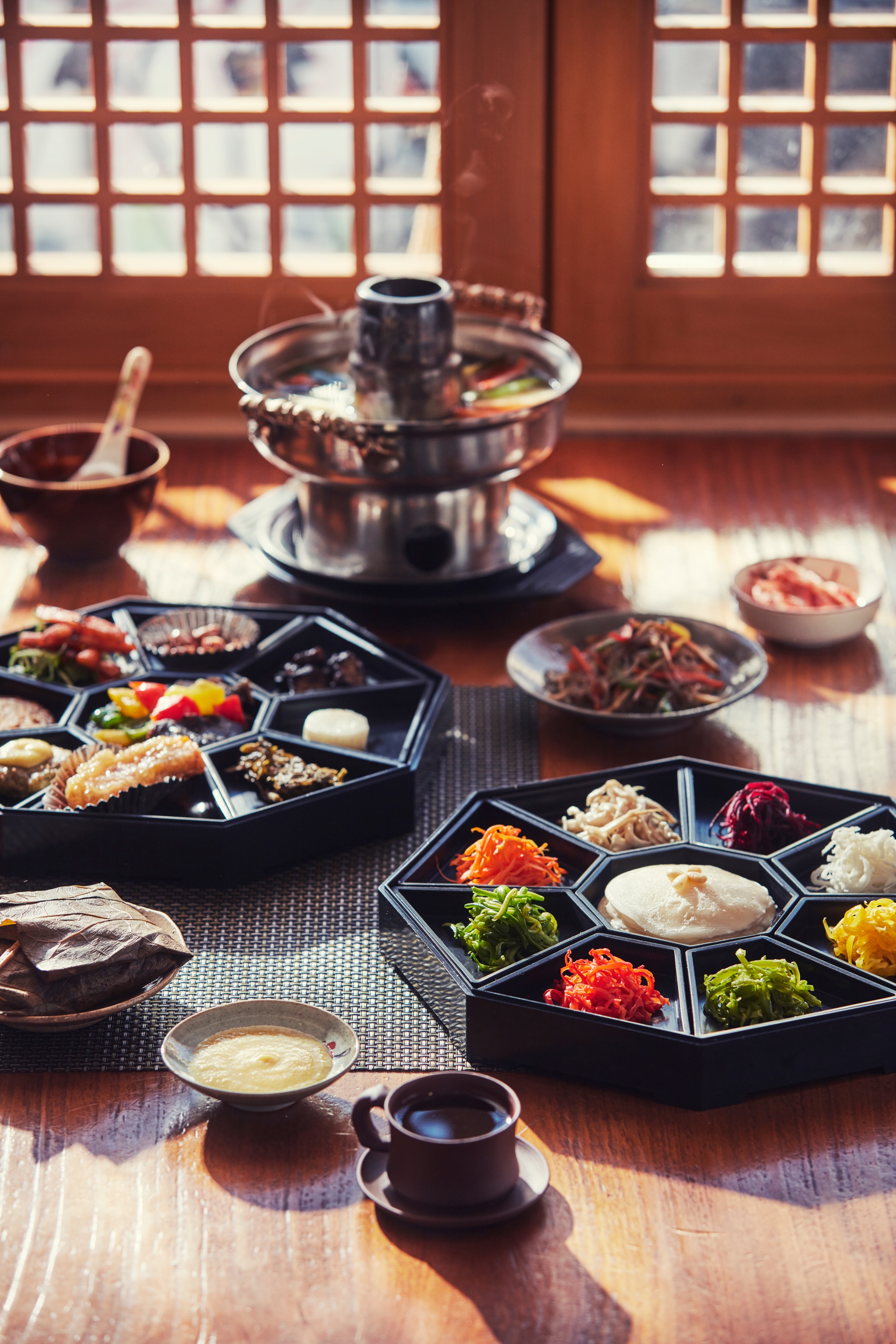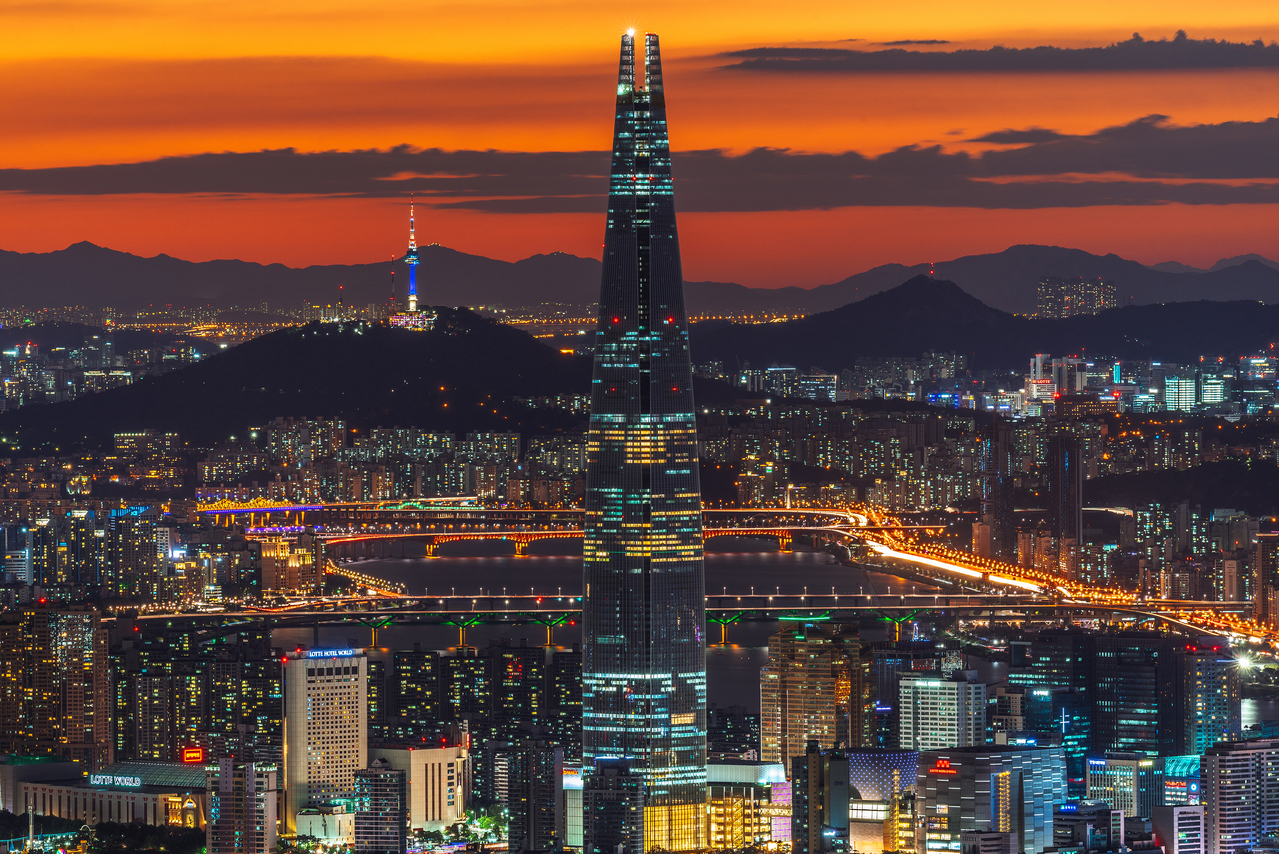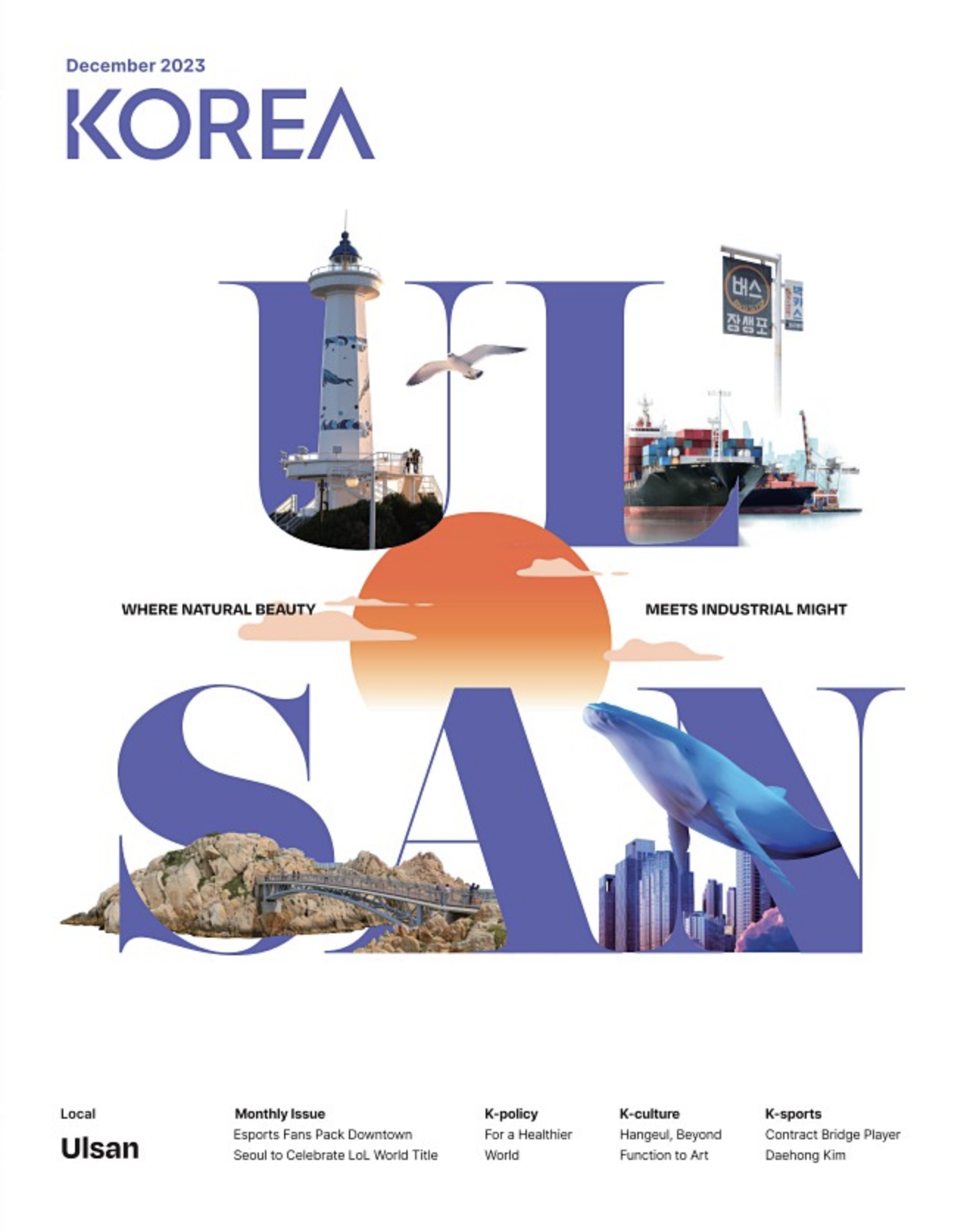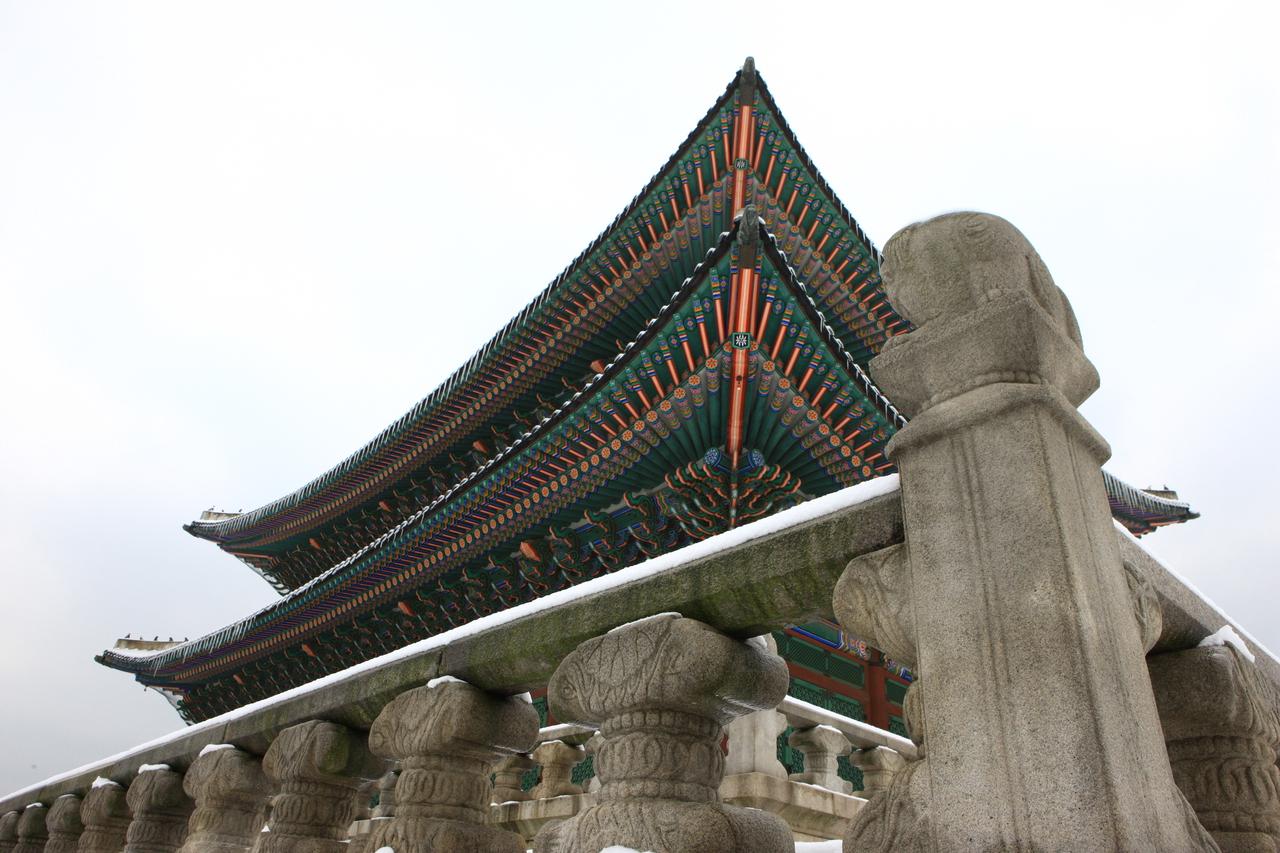Korea is a must-see destination!
Korea has gained international recognition for its technological advancements, including its influential electronics and automotive industries. South Korea is also celebrated for its popular culture, particularly its music, television, and film industries, which have gained widespread popularity around the world. What you may not know is, South Korea is going to blow your vegan socks off!
As of 2021, there were around 2.5 million people in South Korea following a vegan diet. The number of vegans has increased tenfold from 2008 to 2018, and has shown a growth of around 67 percent in the three years after that.

Photo: Korean Vegan Food | ©Korea Tourism Organization - Alexbundo
The traditional Korean diet was predominantly plant-based in its origin, especially within the Buddhist temples spread across the country. Well before veganism came to be widely recognized as essential for the planet’s wellbeing, many cultures had already been highlighting such practices. Korean temple cuisine, as a classic example, has always excluded meat and animal products, making way for a unique vegan culinary tradition. To date, this cuisine is still practised in temples all across this beautiful country. In such a context, cooking is seen as a spiritual practice and as an expression of devotion to nature.
SOURCE
Top Attractions in South Korea
1. Gyeongbokgung Palace
2. Myeongdong Shopping Street
3. The War Memorial of Korea
4. N Seoul Tower
5. Changdeokgung Palace.
UNESCO Heritage in Korea
Korea’s vibrant cultural legacy, comprising music, art, literature, dance, architecture, clothing, and cuisine, offers a delightful combination of tradition and modernity. South Korea preserves a wealth of priceless cultural heritage, the majority of which have been inscribed on UNESCO’s World Heritage List to be protected for future generations. SOURCE
Best Time of the Year to Travel to South Korea
The best time of year to visit South Korea is generally considered to be the spring months of April, May & June and the autumn months of September, October & November. During these two seasons, days are mostly sunny and dry with comfortable average temperatures.
Seoul Korea Just Released a Meatless Restaurant Guide
South Korea’s capital city Seoul issued a guide to the city’s vegetarian restaurants and options. In order to compile the guide, the city government researched Seoul’s dining scene between July and December of 2020. The guide contains information about 948 restaurants, some of which are vegetarian and others that offer meatless dishes. Copies of the guide—which also denotes vegan dishes and restaurants—were distributed to health centres in all of Seoul’s districts along with stickers to label meatless options at restaurants. The guide was also published online, along with an interactive city map to help residents locate vegetarian options.
SOURCE: VegNews
Festivals, Celebrations, and Holidays
Festivals
Korea has a long tradition of starting the New Year (by the lunar calendar) with the deep traditional bows made by children to their elders. Until the mid-20th century, Korea was primarily an agricultural society, whose activities were organized based on the lunar calendar. As such, numerous lunar calendar-based events were celebrated in relation to agriculture. The Lunar New Year’s Day (Seollal) is one of the festivals that represent Korea. On the Lunar New Year’s Day, families gather to share special foods and hold rituals called charye (a simplified form of an ancestral rite). Children and sometimes youths wear new clothes (called seolbim) to bow before their elders (called sebae), wishing them a long life. After the bow, the elders are customarily expected to give money gifts (called sebaetdon) to those who bowed.
Another important seasonal festival is Jeongwol Daeboreum (Greater Full Moon), celebrated on the 15th day of the lunar January. It is celebrated by eating ogokbap, a special dish made by steaming a mix of five different grains, served with an assortment of cooked vegetables. People also play various games and rituals for the unity of the local community and a good harvest.
Along with the Lunar New Year’s Day, Chuseok, or hangawi, is one of the biggest and most important holidays in Korea, which is held on the 15th day of lunar August. On Chuseok, all family members gather around to pay respect to ancestors with newly harvested crops and fruits, and eat special rice cakes called songpyeon.
Celebrations
Korean parents celebrate the 100th day anniversary (baegil) and their children’s first birthday (dol) with special celebratory banquets. A dol banquet typically includes a special event called doljabi, where the birthday baby is presented with various objects to choose from; it is said that the object that the baby chooses foretells her future. For example, a book foretells an academic career, and money is associated with wealth.
Koreans hold extravagant wedding ceremonies with all family members, relatives, and friends. In ancient times, on the wedding day, the groom would ride a horse to the bride’s home, where the bride and groom would bow to each other on either side of a specially prepared banquet table. The groom would wear samogwandae, which refers to the uniform of government officials, and the bride would wear luxurious clothes such as hwarot (usually worn for important rituals at the royal court) and wonsam (female ceremonial topcoat), as well as a flower headdress or jokduri (a type of coronet) on the head.
Koreans traditionally celebrated their 61st birthday, called hwangap, by gathering all descendants and relatives for a large banquet (hwangap janchi). However, with the average life span reaching 80, hwangap banquets have been largely simplified, focusing more on chilsun (70th birthday) instead.
National Holidays
In Korea, there are five national holidays designated by the government. The March 1st Independence Movement Day commemorates the non-violent independence movement that swept the Peninsula on March 1, 1919, to resist the Japanese occupation of Korea. Constitution Day, or Jeheonjeol, is observed on July 17, to celebrate the promulgation of the Korean Constitution on the same day in 1948. National Liberation Day (Gwangbokjeol), celebrated on August 15, commemorates Korea’s liberation from Japanese colonial rule on August 15, 1945. National Foundation Day (Gaecheonjeol), celebrated on October 3, marks the foundation of Gojoseon on October 3, 2333 B.C.E. Gojoseon was the first state ever to be founded by the Koreans. Finally, Hangeul Proclamation Day (Hangeul Day), celebrated on October 9, commemorates the invention and proclamation of the Korean writing system on the same day in 1446.
Temples of South Korea
There are some 900 traditional Buddhist temples in South Korea – and around 20,000 in total. A visit to any of these local places of worship – many of them centuries old — can be a humbling, calming or uplifting experience.
Liquor in South Korea
A wide variety of liquors have been developed across different parts and families of Korea. Currently, some 300 traditional liquors have survived, including Munbaeju (pear-flavored liquor) and Songjeolju (pine knot liquor) in Seoul; Sanseong Soju (distilled liquor) in Gwangju, Gyeonggi-do; Hongju (red liquor) and Leegangju (distilled liquor) in Jeolla-do; Sogokju (rice wine) and Insamju (ginseng liquor) in Chungcheongdo; Kyodong Beopju (rice liquor) and Andong Soju (distilled liquor) in Gyeongsang-do; and Okseonju (distilled liquor) in Gangwon-do.
Makgeolli (unrefined rice wine) is one of the most popular and affordable traditional alcoholic beverages in Korea. It is made by fermenting a mixture of rice and malt along with various other ingredients. It used to be considered a beverage mainly enjoyed by older generations. However, the beverage has been all the rage among Koreans in their 20s and 30s, with makgeolli ice cream, coffee, and other flavors spreading across convenience stores around the country. It is also highly popular among international tourists visiting Korea.
Soju is a distilled liquor made by boiling alcoholic beverages made with grains or sweet potatoes. This colourless liquor has a significantly higher alcohol content than makgeolli. Soju was traditionally considered a luxury. However, in the mid-20th century, a soju made with diluted ethanol emerged as a cheap, people-friendly alternative.

PHOTO: ©Korea Tourism Organization - Heo Hun
South Korea | Geographical and Topological Features
Located at the centre of Northeast Asia, the Korean Peninsula neighbours China, Russia, and Japan. Under the World Geodetic System, it lies between 33 and 43 degrees north latitude and 124 and 132 degrees east longitude. The Peninsula (including both North and South Koreas) is 1,000 km long and 300 km wide on average, and its total land area is 222,000 km2. The total land area of South Korea (below the Military Demarcation Line) is around 100,364 km2. Around 3/4 of the area is covered with mountains. You can find mountains almost anywhere in the country, but there are a few places you can view flat horizons. Topologically, Korea is higher in the east and lower in the west. Tall mountains with altitudes exceeding 1,000 m are concentrated in the north and the east, forming the topological backbone of the country. The mountainsides are steeper toward the east coast, and less severe toward the west coast. Korea is surrounded by the sea on three sides, except for the northern side. The total extension of the coastlines is 17,000 km (including islands). The East Sea is characterized by its deep waters and simpler coastlines, whereas the West and South Seas are shallower, with complicated coastlines and more islands. Each of the three seas offers distinctive features and a wide array of oceanic atmospheres: the East Sea with its clean and deep water; the West Sea with its mud flats thriving with life; and the South Sea with its numerous islands (which earned the sea its nickname: Dadohae, or the sea of many islands).
Discover more about Korea

PHOTO: Korea Magazine | Dec 2023 | HERE
Additional Inspirational reasons to visit South Korea
Cooking With KCC: Korean Temple Food - by Yuri Choi
Ready to VISIT KOREA? Click HERE
Hero Image: Gyeongbokgung Palace, Seoul | Seoul to Soul Vegan Friendly Journey | ©Korea Tourism Organization - Kim Jiho
Additional content sources: https://www.korea.net/ | https://vegnews.com/vegan-travel/south-korea-vegan-hotspot | Google | https://www.happycow.net/blog/vegan-in-south-korea-happycow-complete-guide/



